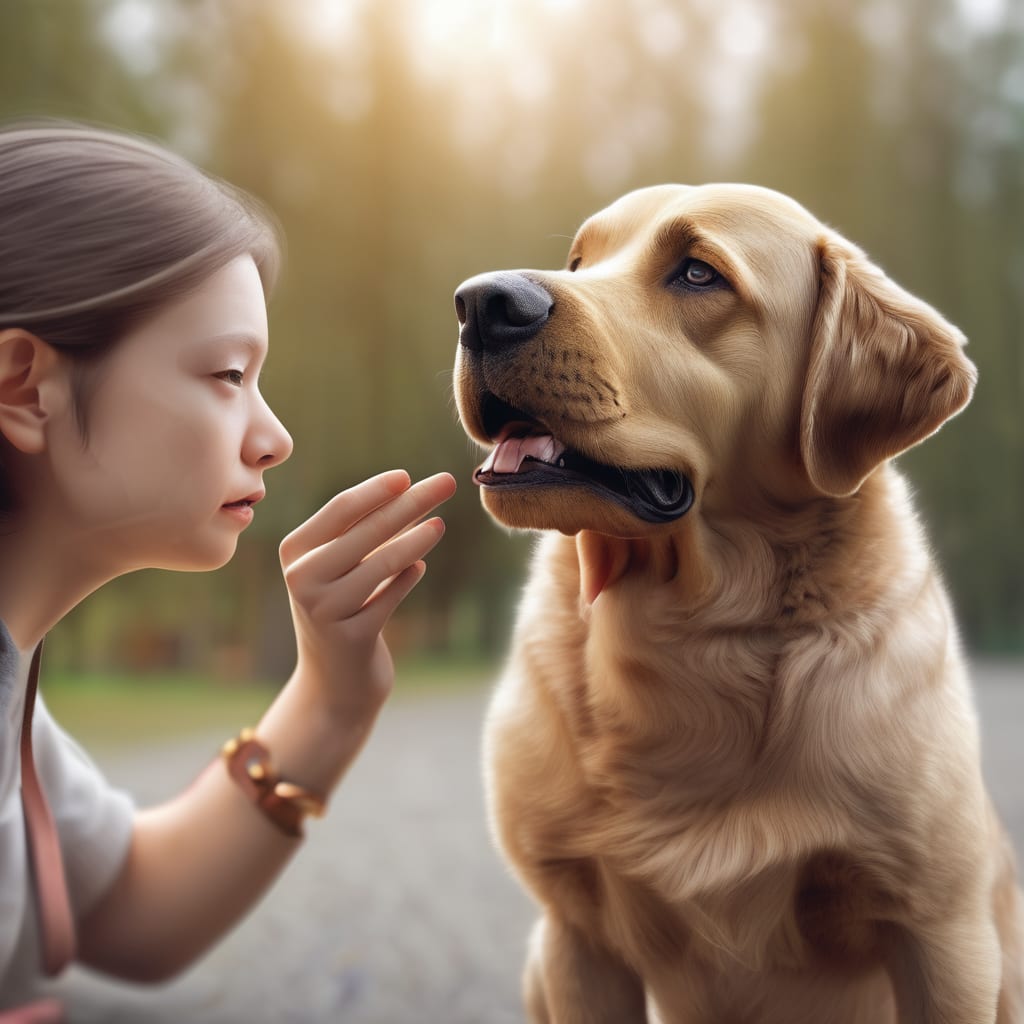Can blind people tell if a dog is friendly by its smell? Or do they have to pet the dog and see how it reacts to touch?
Blind people & dog-friendliness

Beyond Sniffs: How Blind People Navigate the World of Friendly Dogs
Imagine navigating a bustling sidewalk without sight. Every sound and touch becomes a crucial piece of information, painting a picture of the world around you. For blind individuals, encountering a dog presents a unique challenge - how to assess its friendliness. While some might wonder if a friendly sniff reveals a dog's true nature, the answer lies in a fascinating interplay of senses and experience.
Smell's Limited Role in Friendliness Detection: Dogs do emit pheromones, chemical signals that carry emotional information. However, these signals are complex and not readily deciphered by humans. Studies suggest we struggle to accurately distinguish emotions like fear or happiness solely based on canine scent. So, while a friendly sniff might be a positive sign, it's not a definitive one.
The Power of Touch and Sound: Blind people rely more heavily on these senses to assess a dog's temperament. Here's how:
• Reading Body Language Through Touch: A gentle touch can reveal volumes about a dog's mood. A relaxed posture and a wagging tail often indicate a friendly dog. Conversely, a tense body, stiff tail, or growl can signal potential aggression. By feeling the subtle changes in muscle tension, a blind person can gain valuable insights.
• Sound as a Window to Emotion: Vocalizations are another key indicator. Happy barks and playful yelps suggest a friendly canine, whereas growling or aggressive barking warrants caution.
Building Trust Through Non-verbal Cues: Understanding canine body language becomes paramount. A lowered head, a loose and wagging tail, and a playful bow are usually signs of a friendly dog. However, a frightened dog might also exhibit tail wags, so interpreting the overall body language in context is crucial.
The Role of Training for Service Animals: Guide dogs and other service animals undergo rigorous training to ensure their ability to navigate obstacles and potentially avoid unfriendly interactions with other dogs. This training equips them to choose safe paths and react calmly in various situations. While touch and sound remain vital tools for blind handlers to assess friendliness, the dog's training adds another layer of safety and confidence.
Respectful Interactions: When Encountering a Service Animal Team:
• Don't pet the dog unless explicitly invited by the handler. Service animals are working partners, and petting them can be distracting.
• Offer space and avoid creating unnecessary noise or sudden movements.
• If unsure, politely ask the handler if it's a service animal.
Beyond Friendliness: The Unique Bond Between Blind People and Dogs
While assessing friendliness is crucial, the relationship between blind people and dogs goes far beyond basic safety. Guide dogs and service animals provide invaluable companionship, independence, and emotional support. Their remarkable ability to interpret their handler's needs and navigate the world together creates a powerful bond that transcends sight.
By understanding the remarkable ways blind people navigate the world and respecting service animal etiquette, we can foster a more inclusive and friendly environment for everyone, both human and canine.
Sight isn't everything! Blind people navigate the world with remarkable senses. While smell offers some clues, touch and sound are key for assessing a dog's mood. A relaxed body and happy barks signal friendliness, while growls or a stiff tail suggest caution. Understanding these non-verbal cues allows blind people to safely interact with canine companions.
How Blind People Read Canine Cues
While smell offers hints, blind people rely more on touch and sound. A gentle touch reveals body language, and happy barks suggest a friendly pup, while growls signal caution.
Focus Keywords: Blind people, dog friendliness, touch, sound, non-verbal cues, canine behavior






Comments
There are no comments for this story
Be the first to respond and start the conversation.